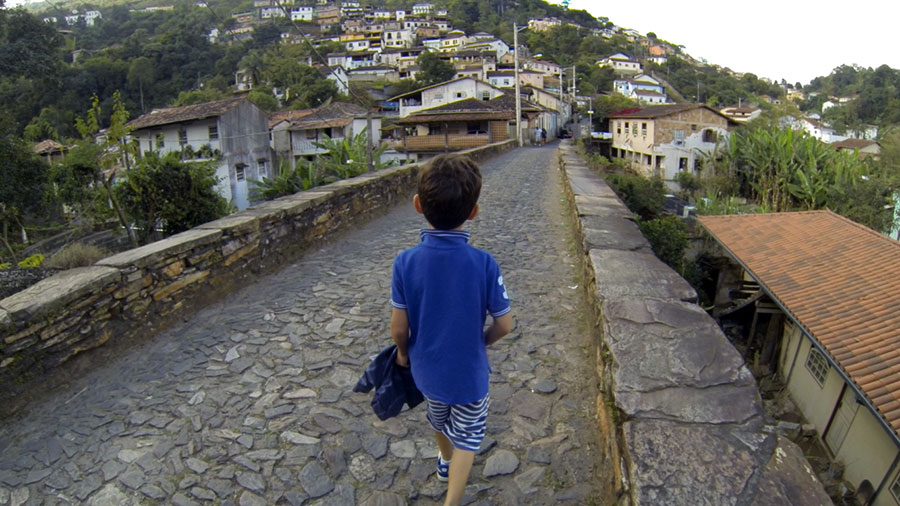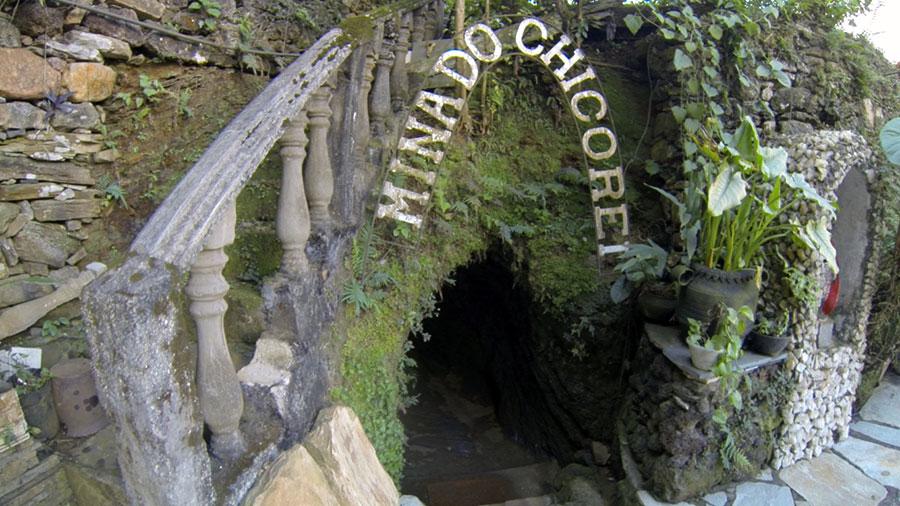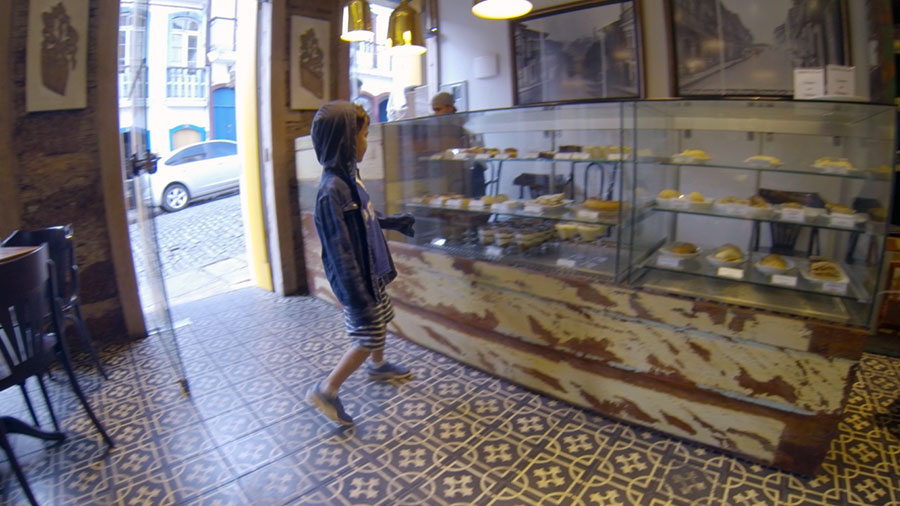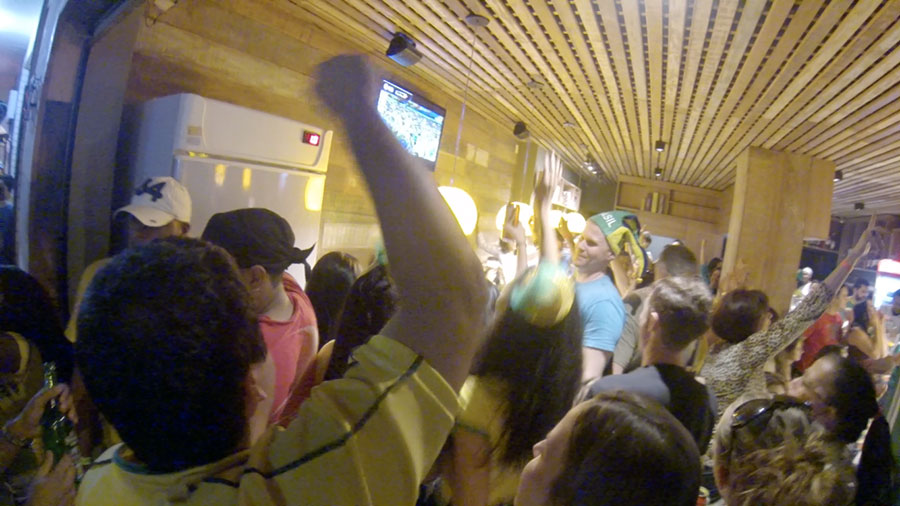About 2 hours south from Belo Horizonte is the historic colonial town of Ouro Preto. A world heritage site, it is steeped in history, as being formerly the largest city in Brazil, the site of a major gold rush in the 1700’s, and where revolutionaries first plotted independence from the Portuguese colonists. It is also where a famous black slave from Africa known as Chico Rei, pulled off one of the most astonishing feats of emancipation in history, that is little known outside of Brazil.
In the 1700’s, there were more people living in Ouro Preto than in New York or Rio de Janeiro. Most of the 100,000 inhabitants were slaves. These days Ouro Preto feels like a small town, albeit stunningly well preserved. It’s like stepping back in time 300 years.
We hired a local driver to take us there, our efforts to rent a car in Brazil during the World Cup proving impossible.
We left Belo Horizonte destination Ouro Preto…

We knew we were arriving somewhere special as we hit the cobblestone streets of Ouro Preto.

Our driver dropped us off in the main square, known as Praça Tiradentes. The building in the rear of the photo (below) is the Museu da Inconfidência (Museum of the Conspiracists – the name given to the revolutionary movement that started in the town). It used to be the old municipal headquarters and jail, and contains the tomb of Tiradentes, one of 3 main revolutionaries, all former poets, who plotted to overthrow the Portuguese occupation in 1789, and were killed or exiled for their trouble.

The square, as is most of the town, is virtually unchanged from 300 years ago.

We walked about 10 minutes east of the square, down some cobblestone streets and steep hills, to get to the site of an even more amazing story. The views all around are spectacular.


Our destination was a little known (outside of Brazil) gold mine, known as Chico Rei. Chico Rei was the name given to an African King, originally known as Galanga, who was captured by Portuguese slave traders around 1740, along with 200 of his tribe in Africa (in what is now the Democratic Republic of Congo).
Ouro Preto’s gold rush was in full swing at this time, and Galanga and his tribe were sent across the Atlantic in a ship, to be sold into slavery to local gold miners. It was during this voyage, that the Portuguese sailors noticed how highly regarded he was among his peers. They nicknamed him Chico Rei, meaning Francisco the King (Francisco being a popular Portuguese name). Unfortunately for the King, his wife and all his sons except one, died during the voyage, and only 100 of his tribe made it to Brazil alive.
In Ouro Preto he was a King no more. Forced to work in the gold mine with the rest of his tribe, he painstakingly smuggled out small flakes of gold in his hair, under his fingernails, and between his toes, to save enough money to buy his freedom. It took him 5 years, working night and day, seven days a week, but eventually he bought his and his son’s freedom. Eventually he had made enough money to buy the mine from its owners, which had become unprofitable. He turned it around, made it profitable, and bought all of his tribe’s freedom.
We were so moved by this story, and surprised that it didn’t feature more prominently in the tourist info, that we wanted to dig deeper. It was tricky to find, but eventually we found Chico Rei’s now abandoned mine, and the family that now owns it. It turns out that anyone can visit the mine, but when we went, there was no one else there despite there being hundreds, if not thousands of tourists in the town.
We paid the family who owns it a small fee, put on hard hats, and ventured into the mine.


Crouching in the mine’s tunnels, barely Eli’s height in most places, it was impossible not to think of the King and his tribe, struggling away, night and day for years, in impossible conditions, smuggling out flakes of gold to secure their freedom. It was very moving, and easily the most profound experience of our trip so far.

We made our way back across a small bridge and towards the main part of the town.

There are several incredible churches in Ouro Preto – each with their own fascinating story. So successful was the gold mining in town that no expense was spared building incredible baroque buildings and churches – the skyscrapers and office towers of their day.

We stopped into a nice little cake shop.

Eli was amused by a ‘life’ painting in one of the town’s many museums.

The whole town is full of streets like this…

We wandered around town taking it all in



Our time was up sadly, we could easily have spent 2 or 3 days here. A couple of the museums we wanted to see, including a museum documenting the revolution, were closed. Monday is not the best day to visit it turns out, as most of the museums are shut.
We found our driver again, and headed back towards Belo Horizonte, just as the sun was setting.

Back in Belo Horizonte, huge crowds were gathering in the Savassi neighbourhood to watch the Brazil v Cameroon game. Our hotel is smack in the middle of this, so we walked the rest of the way in.

I stopped to watch the Brazil game in one of the bars next to our hotel. The atmosphere was electric…

There were thousands of people in the street outside our hotel, and even a couple of English fans… being rather boisterous.


As I write this, several hours later, from the 9th floor of our hotel, the sound of the crowds outside is still deafening. With this post finally done, I’m off out now to join them.
Our first World Cup game (England v Costa Rica)… is tomorrow!